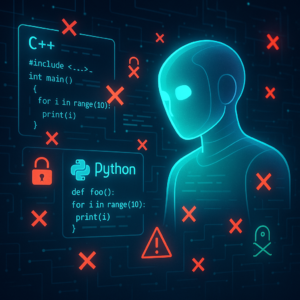Navigating the Untamed Frontier: The Exciting and Perilous World of ChatGPT Plugins

Navigating the Untamed Frontier: The Exciting and Perilous World of ChatGPT Plugins
In the buzzing hive of digital innovation, AI is the prime mover accelerating the evolution of technology. Leading the pack is ChatGPT, OpenAI’s flagship large language model (LLM) that has transformed conversations with powerful, human-like interactions. But what’s next for ChatGPT? Enter the thrilling world of ChatGPT plugins: an app ecosystem poised to change the game. Think of it as a buffet where you can pick exactly what you want, making your conversational AI experience unique and tailored. But, like all thrilling adventures, this new frontier has its own set of challenges and things we need to watch out for.
The Rise of ChatGPT Plugins
Imagine ChatGPT as a sophisticated smartphone, and the plugins as apps you download from a store. OpenAI has developed a plugin store to supercharge ChatGPT, allowing developers to create tiny helpers—or plugins—to make your AI buddy even more capable. From checking real-time weather to crunching business data, these plugins stretch ChatGPT’s abilities to new heights.
Launched in 2023, ChatGPT quickly attracted attention, blazing its way to 180 million users in less than two years. Inspired by app stores like Android’s, OpenAI opened its doors to developers with the vision of an open ecosystem filled with chatbot enhancements. Now, they’re offering an AI experience that’s as personal as your own digital toolbox.
Meet The Plugin Heroes
The ChatGPT plugin ecosystem isn’t about one-size-fits-all; it’s like a marketplace bustling with options to fit every user’s needs. This ecosystem includes everything from quick data lookups to customized professional services. But, with close to 1,038 plugins in the store and counting, there’s a lot to sift through.
Here’s an interesting find—the sheer variety of plugins create an uneven playing field. Over half are clumped into just five categories—Data & Research, Tools, Developer & Code, Business, and Entertainment. This distribution is useful for users trying to figure out what to explore and developers planning their next projects.
Behind The Scenes: How Do They Work?
Setting up a plugin isn’t your traditional app development journey. It’s more like dragging and dropping an extension into your browser. Developers publish their APIs (think of them as specialized messengers delivering specific information) into ChatGPT’s system following a set guide, and voila! A new power-up is available for the AI assistant.
When you ask ChatGPT, “What’s the weather in New York on June 7th?” it’s not just sitting with its digital thumbs twiddling. It grabs a plugin, says, “Hey, I need this information!” and then shoots off to get you the answer. This wizardry makes it possible for you to experience a rich tapestry of services, all seamlessly integrated into ChatGPT.
Security and Privacy: The Thorns Among the Roses
Every dreamy landscape needs a dose of reality, and here it’s the twin dragons of security and privacy. Our deep dive into this world shows that this exciting new ecosystem has considerable caveats. More than 35% of these plugins are showing severe privacy cracks, like leaking sensitive credentials. Despite their magical uses, these systems can expose the crown jewels—user data—to less savory elements if not properly chaperoned.
Intriguingly, among the plethora of plugins, discrepancies in data protection and legal documentation also loom large. Some even have legal links that are as out-of-place as an igloo in the desert. These vulnerabilities make it clear that there’s work needed to bolster our digital defenses.
The Road Ahead: Lessons Learned and Next Steps
Even with its wild west vibe, the future of the ChatGPT ecosystem sparkles brightly. OpenAI and developers alike have taken these findings to heart. Improvements have started to shield our favorite chatbot plugins from prying eyes and ensure smoother sailing in the security department.
But what can you, a user or developer, take away from this? For one, always look for transparency—make sure the plugins you engage with have their paper trail, like security documentation, intact and visible. Developers should aim to present clear, updated documentation, staving off any unwarranted surprises.
Key Takeaways
-
Expanding Horizons: The ChatGPT plugin ecosystem is an exciting space offering personalized AI experiences much like installing apps on your smartphone.
-
A Mixed Bag: While numerous plugins cater to various needs—data crunching, professional tools—the functionality distribution is uneven, creating clusters in a few key areas.
-
Security Matters: Significant security vulnerabilities exist, from leaking credentials to insufficient data protection protocols. Being informed and cautious is essential.
-
Looking Forward: The future looks promising with moves towards solidifying security measures and providing more robust regulatory compliance.
-
Stay Informed: Whether you’re a user or a developer, understanding the ecosystem, seeking transparency, and staying updated on plugin guidelines will ensure a safer, more awesome ChatGPT experience.
In this brave new world of AI-assisted interaction, staying curious and informed is your best guide. So wander freely in the ChatGPT plugin wilderness, but remember—an adventure is only as good as your preparation for it. Happy exploring!
If you are looking to improve your prompting skills and haven’t already, check out our free Advanced Prompt Engineering course.
This blog post is based on the research article “Exploring ChatGPT App Ecosystem: Distribution, Deployment and Security” by Authors: Chuan Yan, Ruomai Ren, Mark Huasong Meng, Liuhuo Wan, Tian Yang Ooi, Guangdong Bai. You can find the original article here.




